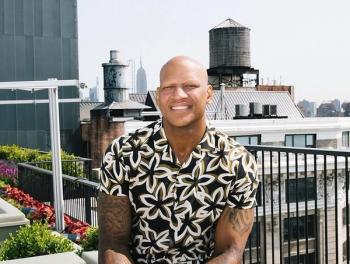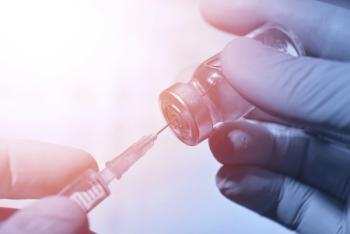
New breast cancer screening guidelines: Questions and answers
The U.S. Preventive Services Task Force has issued new recommendations for screenings to begin at age 40. Some hoped to see more guidance for women.
Women should begin getting screened for breast cancer at the age of 40, according to new guidelines from the U.S. Preventive Services Task Force.
The task force released draft recommendations last year, and published
Here’s a quick overview of the recommendations, and where they have garnered praise and some criticism.
What’s the significance of saying screenings should begin at age 40?
It’s a significant change from the task force’s earlier guidance. Previously, the task force said regular screenings should begin at age 50.
Wanda Nicholson, MD, chairwoman of the task force, said more women in their 40s are getting breast cancer, “so this recommendation will make a big difference for people across the country.
“By starting to screen all women at age 40, we can save nearly 20 percent more lives from breast cancer overall,” Nicholson said in a
Do the guidelines call for annual screenings?
No, and that’s a point of contention for some healthcare leaders.
The task force recommends that women should get screened every other year at age 40.
Nina Vincoff, the chief of breast imaging at Northwell Health, told Chief Healthcare Executive® in
“When we screen every year, we increase the chances that we're going to find breast cancers when they're smaller and easier to treat,” she said.
The American College of Radiology issued
Is there a maximum age for screenings in the task force recommendations?
Women should continue annual screenings until the age of 74, the task force says. The task force says more research is needed to evaluate the risks and benefits for screenings over the age of 75.
Some physicians disagree with the task force on that point, noting that some women remain healthy and active well after the age of 75.
Brett Roberts, head of breast radiology at Ochsner Health, told Chief Healthcare Executive® in October that he suggests recommendations should be tailored to individual patients.
“If it seems like they're going to have a good five to seven years of life ahead of them, they'd benefit from a screening mammogram,” Roberts said.
Do the guidelines offer recommendations for women with dense breasts?
The task force notes that almost half of all women have dense breasts, putting them at greater risk for breast cancer. But the task force didn’t specify recommendations for such women.
“Unfortunately, there is not yet enough evidence for the task force to recommend for or against additional screening with breast ultrasound or MRI,” the task force said. “We are urgently calling for more research on whether and how additional screening might help women with dense breasts find cancers earlier.”
U.S. Rep. Rosa DeLauro, D-Conn., criticized the lack of guidance for women with dense breasts.
“Because of the Task Force’s failure to issue a recommendation that would ensure women have these additional screenings covered, I fear women may forgo these screenings entirely if their insurance does not cover it,” DeLauro said in a statement. “This threatens the health outcomes of women and in the worst cases, their lives.”
The Food and Drug Administration has adopted new regulations requiring providers to notify women who get mammograms if they have dense breast tissue, which increases the risk of breast cancer. Healthcare leaders say that’s an important step that could help more women identify cancers.
Are there more specific guidelines for Black women?
The task force notes that
The task force doesn’t outline more specific guidelines for Black women. But the task force said it is “urgently calling for more evidence to better understand whether Black women could potentially be helped by different screening strategies.”
John Wong, MD, the vice chair of the task force, said that more must be done to reduce disparities in treating breast cancer.
“Clinicians must help reduce any barriers to patients getting the recommended screening, timely, equitable, and appropriate follow-up, and effective treatment of breast cancer,” Wong said in a statement.
What are other reactions to the guidelines?
In an
Health systems and insurers are likely to establish screening at age 40 as a benchmark. But they call for a different approach.
“We suggest that health systems should instead measure receipt of high-quality shared decision-making about breast cancer screening starting at age 40 years,” they wrote. “They should also measure equity in breast cancer evaluation, treatment, and outcomes.”






































